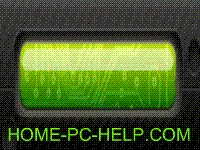Thermal Relays
Thermal Relays (Time-Delay)
Some equipment requires a "warm-up" period between the app-lication of power and some other action. For example, vacuum tubes (covered later in this training series) require a delay between the application of filament power and high voltage. A time-delay relay will provide this required delay.
Time-delay thermal relays (the figure below), are constructed to produce a delayed action when energized. Its operation depends on the thermal action of a bimetallic element similar to that used in a thermal circuit breaker. A heater is mounted around or near the element. The movable contact is mounted on the element itself. As the heat causes the element to bend (because of the different thermal expansion rates), the contacts close.
Thermal relays (time-delay-type).
Thermal relays can be described by the method of packaging; open, semisealed, and sealed. The figure below shows several different relays and illustrates these three types of packaging.
The figure below view (E), (G) and (H) are open thermal relays. The mechanical motion of the contacts can be observed and the thermal relays are easily available for maintenance. View(A), (B) and (C) are semisealed thermal relays. The covers provide protection from dust, moisture, and other foreign material but can be removed for maintenance.
Relay-enclosures.
The clear plastic or glass covers provide a means of observing the operation of the relay without removal of the cover. View (D) and (F) are examples of a hermetically sealed relay. These relays are protected from temperature or humidity changes as well as dust and other foreign material. Since the covers cannot be removed, the relays are also considered to be tamper-proof. With metal or other opaque covers, the operation of the relay can be "felt" by placing your finger on the cover and activating the relay.
MAINTENANCE OF RELAYS
The relay is one of the most dependable electromechanical devices in use, but like any other mechanical or electrical device, relays occasionally wear out or become inoperative. Should an inspection determine that a relay is defective, the relay should be removed immediately and replaced with another of the same type. You should be sure to obtain the same type relay as a replacement. Relays are rated in voltage, amperage, type of service, number of contacts, and similar characteristics.
Relay coils usually consist of a single coil. If a relay fails to operate, the coil should be tested for open circuit, short circuit, or short to ground. An open coil is a common cause of relay failure.
During preventive maintenance you should check for charred or burned insulation on the relay and for darkened or charred terminal leads. Both of these indicate overheating, and the likelihood of relay breakdown. One possible cause for overheating is that the power terminal connectors are not tight. This would allow arcing at the connection.
The build-up of film on the contact surfaces of a relay is another cause of relay trouble. Although film will form on the contacts by the action of atmospheric and other gases, grease film is responsible for a lot of contact trouble. Carbon build-up which is caused by the burning of a grease film or other substance (during arcing), also can be troublesome. Carbon forms rings on the contact surfaces and as the carbon rings build-up, the relay contacts are held open.
When current flows in one direction through a relay, a problem called "cone and crater" may be created at the contacts. The crater is formed by transfer of metal from one contact to the other contact, the deposit being in the shape of a cone. This condition is shown in the figure below view(A).
Relay-contacts.
Some relays are equipped with ball-shaped contacts and, in many applications, this type of contact is considered superior to a flat surface. The figure above, view(B) shows a set of ball-shaped contacts. Dust or other substances are not as readily deposited on a ball-shaped surface. In addition, a ball-shaped contact penetrates film more easily than a flat contact. When you clean or service ball-shaped relay contacts, be careful to avoid flattening or otherwise altering the rounded surfaces of the contacts, YOU could damage a relay if you used sandpaper or emery cloth to clean the contacts. Only a burnishing tool, shown in the figure below, should be used for this purpose.
Burnishing-tool.
You should not touch the surfaces of the burnishing tool that are used to clean the relay contacts. After the burnishing, tool is used, it should be cleaned with alcohol.
Contact clearances or gap settings must be maintained in accordance with the operational specifications of the relay. When a relay has bent contacts, you should use a point bender (shown in the next figure below) to straighten the contacts. The use of any other tool could cause further damage and the entire relay would have to be replaced.
Point-bender.
Cleanliness must be emphasized in the removal and replacement of covers on semi sealed relays. The entry of dust or other foreign material can cause poor contact connection. When the relay is installed in a position where there is a possibility of contact with explosive fumes, extra care should be taken with the cover gasket. Any damage to, or incorrect seating of the gasket increases the possibility of igniting the vapors.
Become a loyal member to our site. It's free!
Site Search


Translate your page
If English is not your first language you can Translate the text on this page to any one of the languages found in the drop down menu. Select your language from the list for an instant translation.
Looking for something unique for your project? Choose from the drop down menu for quick access to the item you seek.
Related Pages
Become an Electronics Technician
Convert most anything with this utility
Find your wire and cable here!
Sponsored Sites


If you like this site please pay it forward. Donations are welcome.

















